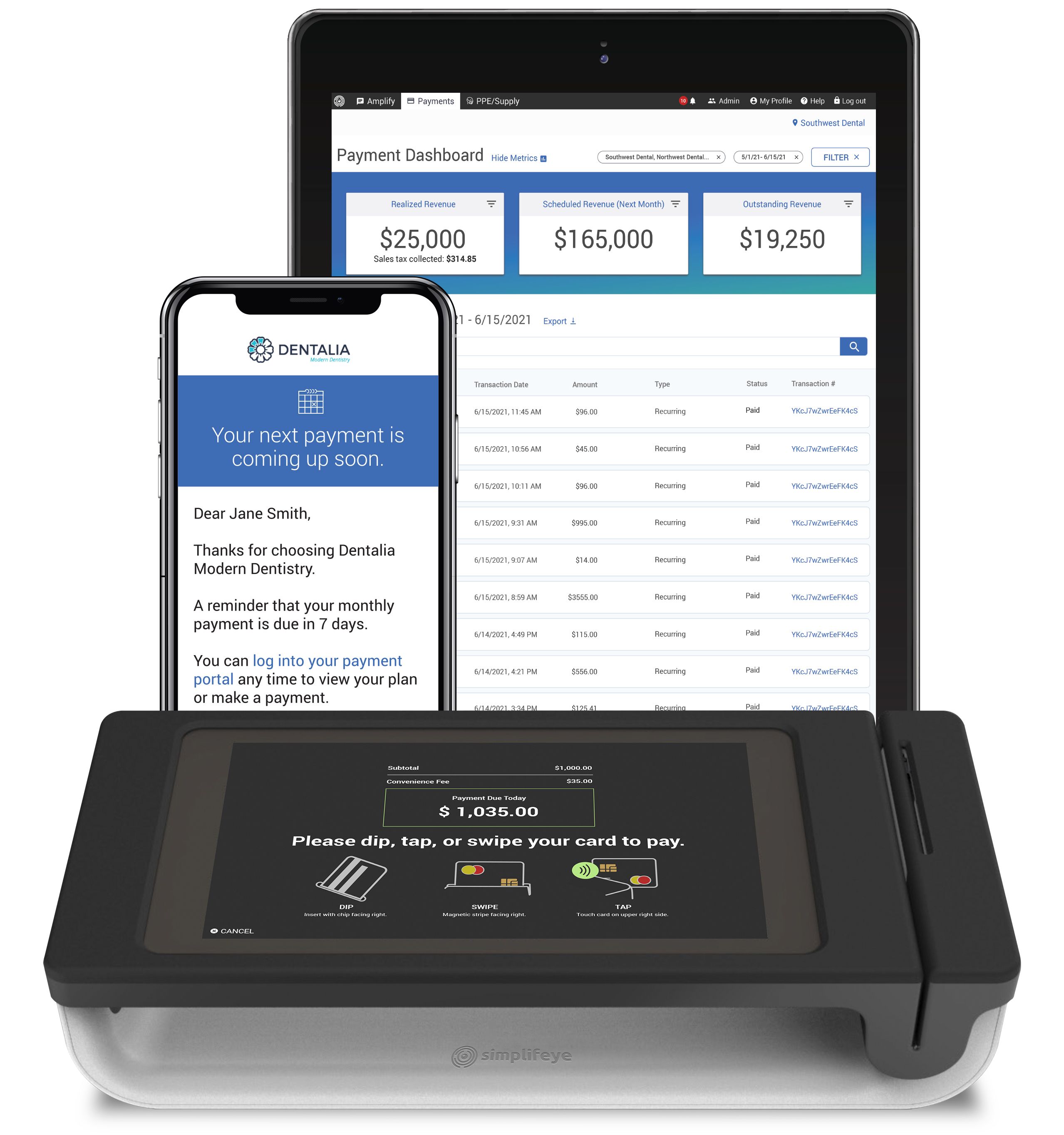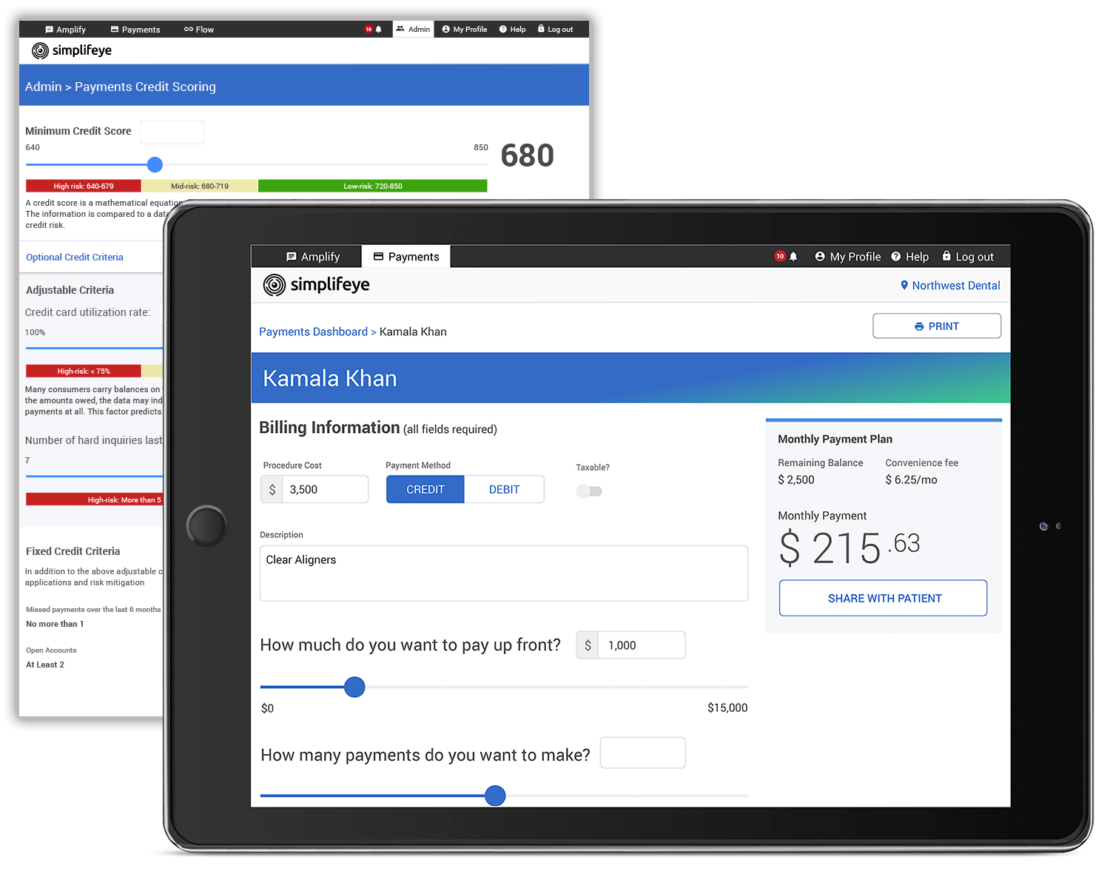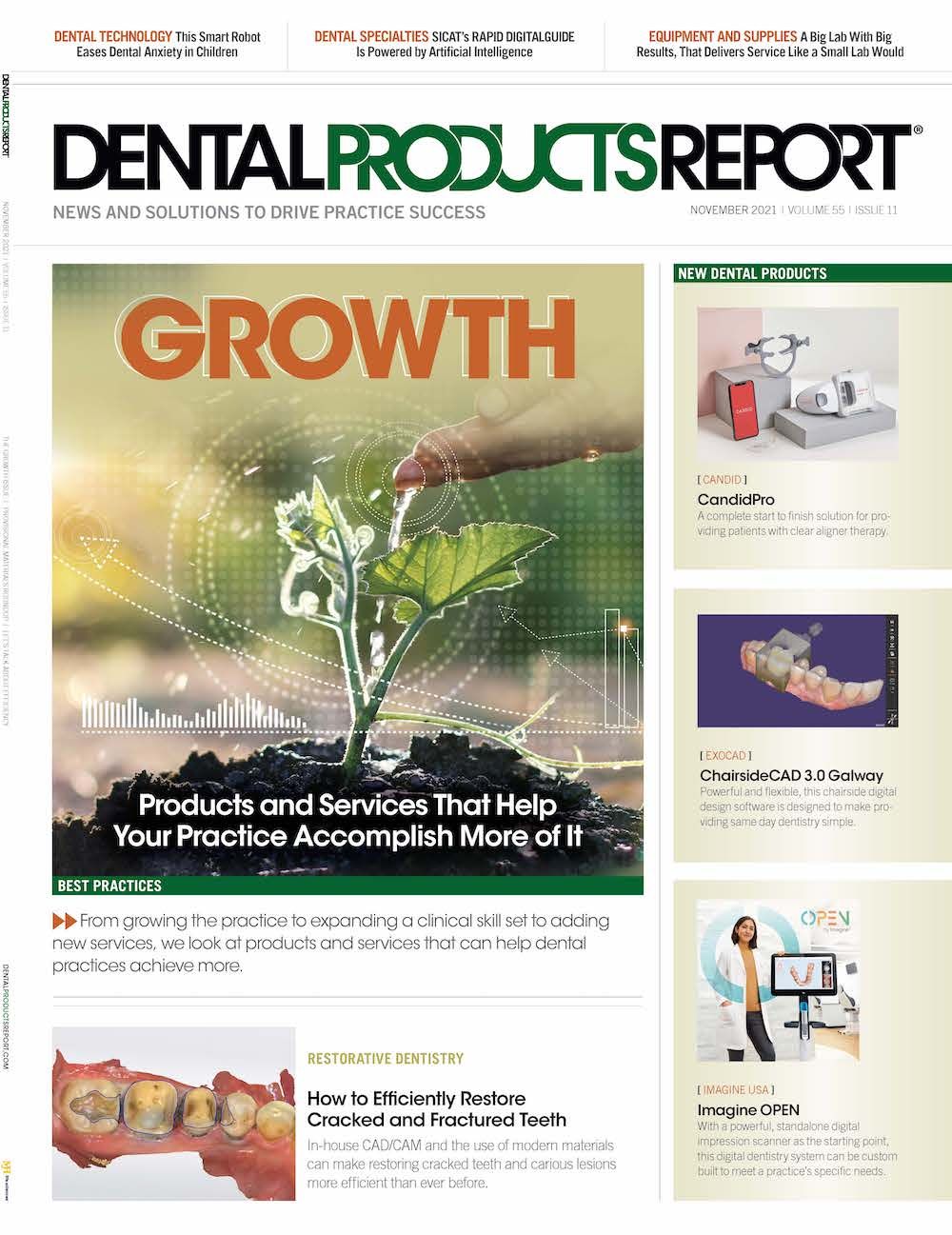The thought process behind Simplifeye is relatively simple, according to founder and CEO, Ryan Hungate, DDS, MS. How can technology be incorporated into dental practices in a way that instantly improves the workflow, saves the team time, is easy to learn, and improves the patient experience?
Simplifeye Payments
Payments is an end-to-end payment solution designed for practices. The platform allows practices to process in-office transactions, send invoices, and create customizable payment plans all with HIPAA compliance and 0% merchant fees.
Simplifeye
646-846-7467 | simplifeye.com
That’s the question Dr Hungate considered when he founded Simplifeye, a patient engagement and communication technology company.
“I was always premed, predental. With all of the different pieces of software [we were] using when [we got into] dental school or practice, I remember thinking ‘My God. This is what this looks like—it doesn’t take the workflow aspect of these practices into consideration whatsoever,’”
While in dental school, Dr Hungate began to realize many doctors believe being a great clinician will make patients magically appear. However, it is the doctors who excel at business and marketing who get patients to show up. “But it leaves a lot of great clinicians who are focusing more so on the clinical side to the wayside,” he says.
Dr Hungate believed if he could create something with workflow intentionality, he could disrupt the industry. So Simplifeye began by zeroing in on 1 area of the practice—the front office.
“We focused first on getting patients into the practice. We started with our 24/7 live chat—real human beings working 24 hours a day, answering questions within 7 seconds, no extra work for your front desk,” Dr Hungate says. “Or better yet, letting you concentrate on working with patients and we take care of the monotonous day-to-day.”
Now Simplifeye is turning its attention to payment processing. Collections is an area that hasn’t seen much change in 20 years, Dr Hungate says, especially in dentistry. Companies such as Uber and Square have offered services and technology that are almost habitual. People expect to encounter that technology throughout their day, even in a health care setting.
“Those things are starting to happen in the real world, yet health care, and dentistry specifically, is getting left behind in the dust,” Dr Hungate says. “This is where we have to fix this. We started with helping get patients into the practice. Now what’s cool is we’re starting to connect that with a maybe even more important part of your practice—it’s more integral—which is the payment processing and revenue cycle management portion.”
The Challenges of Payment Processing
One of the problems is that most practices utilize a patchwork of payment processing solutions. Traditional payment processes are creating more work for the front desk staff, according to Dr Hungate.
The main challenge is 2-fold: Most credit card machines do not integrate with any other software, forcing front desk staff to take receipts and manually enter that data into their electronic health records. This leaves room for error, Dr Hungate explains.
This is where Simplifeye Payments comes in—an end-to-end payment solution that is designed to process in-office transactions, send invoices, and create customizable payment plans. Simplifeye Payments is a single-system, integrated solution that effectively manages revenue.
Many available electronic health record systems on the market include some kind of payment plan option, but they do not take into consideration how patients actually pay today, including Apple and Google Pay, Dr Hungate says.
“You can tell there are certain players at hand in this industry. They have just been here on an island enjoying the sun, and it’s time for somebody to come in on behalf of the doctor with knowledge in this area and help them out, because I can honestly say they’re being taken advantage of by some companies,” Dr Hungate says.
Simplifeye Payments offers a centralized dashboard where practices can identify what is working and what areas need improvement. Here, the team can see a live view of practice cash flow, triage accounts receivable to help strengthen collections, communicate with patients via text messaging and email directly from the platform, and secure user accounts with permissions to secure financial data.
Simplifeye Payments automates the collections workflow to save staff time and enable practices to recoup more revenue. It creates digital invoices for recurring payments and sends automated email and text message payment reminders. It also securely accepts payments online, via mobile, or in-office. And its integrations with practice management systems make it easy to search for patients and find transactions.
Developed With Intentionality
The development of Simplifeye Payments was a very involved and deliberate process, according to Dr Hungate.
“We came at it from a really comprehensive angle,” he says. “Simplifeye got a great head start because we always put the doctor first. We think to ourselves ‘Will they actually use this or not? Do they want it?’ Because there are so many times where you ask a doctor, ‘What do you want?’ They tell you, then they never use it. And guess what? It’s not top secret, but it’s not the doctor using this software—it is your front office team or your office manager,” he says.
“It took a couple years to build this entire system from scratch,” Dr Hungate says. “We could have spun up something with a processor on the back end and done this very quickly, like a lot of people did, but we wanted to be more thoughtful of the process and really help them out, so that they use it forever. We don’t want this to be like ‘Oh, this is cool,’ then something new comes out tomorrow and they replace it. We wanted to do the research to see what our users actually want and what they’ll use, which is sometimes completely different,” he says.
Simplifying the Workflow
The result has been positive feedback from the industry. The 1 thing he misses about practicing dentistry is the instant gratification of creating a beautiful smile and changing a patient’s life, Dr Hungate says. However, the Payments platform is the closest he’s ever gotten to that feeling, he adds.
“This is one of the closest things I’ve gotten to that because it’s instantaneous gratification,” Dr Hungate explains. “It’s a great feeling to know you’re saving people time because it’s so easy to reconcile payments now,” he says.
“Where they look at that and go, ‘Oh, wow, this is something that’s going to be a game changer for my practice,” Dr Hungate continues. “So, we’re getting great feedback there and we’re also seeing a reduced amount of tedious tasks.”
Take payment plans for a clear aligner case as an example. Most practices will put a patient in a clear aligner and that patient will then swipe a credit card to put a down payment on the treatment, Dr Hungate explains. The issue is that many practices must rely on that patient to show up every single time—and swipe their credit card at each appointment.
Instead, practices should be able to tokenize the patient’s payment information so it’s encrypted and securely stored, and then charge the credit card monthly.
Plus, its Card Updater technology automatically notes when a credit card is updated—whether that is a new expiration date or other data—and updates the token without missing a beat.
This avoids missed payments and forcing the front desk staff to make a call to that patient for an updated credit card and then manually having to enter into the practice management system.
“It’s starting to remove a significant amount of work from these front desk teams and they’re so happy—it is becoming ingrained into their workflow,” Dr Hungate says. “It lets them concentrate more on the patient at-hand instead of the tedious stuff like scheduling, billing, getting credit cards on file, and tracking down patients for a payment.”
When a patient doesn’t pay on time, some practices think it’s because the patient does not want to pay. In reality, it might be that the practice unintentionally made it difficult for the patient to pay their bill, Dr Hungate says.
“I always think about receiving a paper bill in the mail. We’ve all seen those doctor’s bills come in... and it’s 3 months after the appointment and then it sits on a table forever,” Dr Hungate says. “Then you expect a patient to call and read their credit card number over the phone. It is ludicrous that you don’t even give them the option to pay online or via mobile,” he says. “You have to make it easy for the patient to pay you. That’s how we are thinking.”
What’s Next
So far, Simplifeye has focused on 2 areas—getting patients into the practice with its 24/7 live chat service and online self-scheduling solution, and revenue cycle management with the Payments platform. Next, the company is turning its attention to how those products work together, Dr Hungate says. All of the information that is gathered about patients as they enter a practice is valuable data, he adds.
“Our goal is to make it easy for the patient—from scheduling, to completing forms, to paying their bills, to receiving patient recare and treatment completion reminders,” Dr Hungate says. “All of this will make the patient journey simpler and with less friction. And that means more people will receive the dental care they need.


